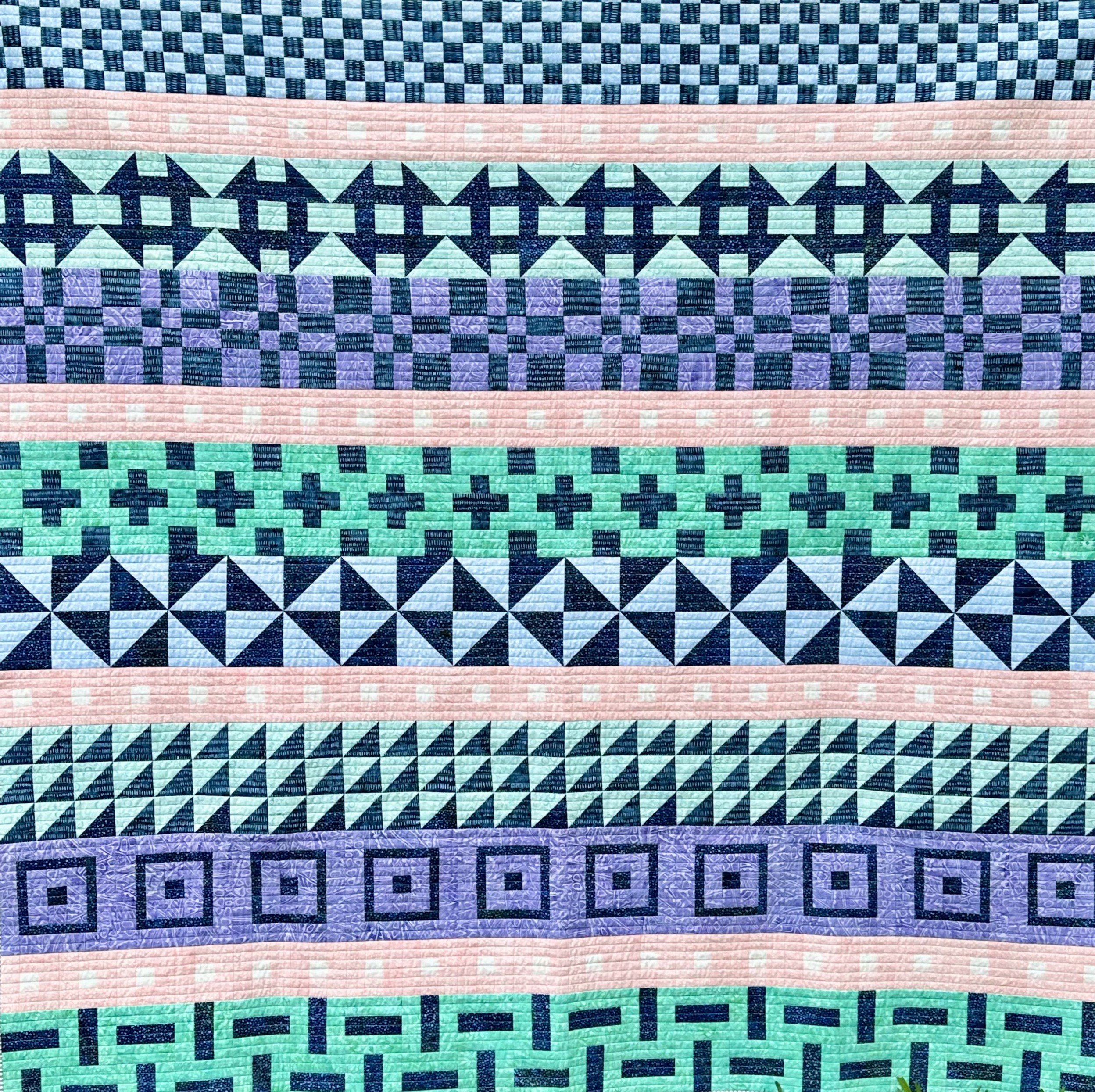Caring for your Quilt
Washing
Try not to wash your quilt too often, because frequent washing can cause color fading and increased wear. Unwashed quilts have a crisper appearance, whereas washed quilts tend to have a softer, more lived-in feel.
Use Shout Color Catchers to prevent fabrics from bleeding. If it’s your first time washing the quilt, I recommend using several color catcher sheets. Likewise, when washing quilts with saturated colors or large quilts. I prewash all fabric before sewing to remove excess dye; however, this does not eliminate the risk of bleeding when washing.
Hand washing is recommended, with cold water and gentle detergent that is free of dyes, bleach, and fragrance. Submerge the quilt, agitate gently for ten minutes, and then drain the soapy water. Refill with fresh water to rinse. Repeat until the water is free of suds.
If you machine wash your quilt, use cold water and the delicate cycle. Use gentle detergent that is free of dyes, bleach, and fragrance, and be sure to use a gentle spin cycle.
Drying
Do not wring or twist the quilt when wet. To remove excess moisture after washing, sandwich the quilt between white or light-colored towels (to prevent bleeding), and roll to squeeze out excess water.
For best results, lay your quilt flat to air dry to prevent shrinking. Do not hang to dry, because the weight may cause damage or distortion.
Machine drying may cause mild shrinking, giving the quilt a soft crinkly feel. If you machine dry your quilt, it is important to use low heat to prevent damage. Tumble dry on low until the quilt is damp and then let it air dry.
Storage
Avoid displaying your quilt in direct sunlight to prevent fading.
For storage, loosely fold or roll your quilt to prevent creases. Wrap it in a cotton sheet or pillow case to keep it clean. Periodically remove the quilt to air it out for several hours. Change the position of the creases when refolding. Store in a cool dry place. Avoid storing in plastic bins or cardboard boxes.




